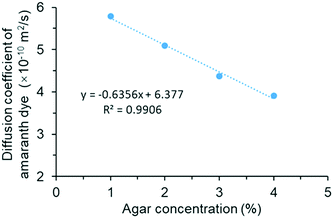 Open Access Article
Open Access ArticleCreative Commons Attribution 3.0 Unported Licence
Correction: Fluid displacement during droplet formation at microfluidic flow-focusing junctions
Haishui
Huang
ab and
Xiaoming
He
*bcd
aDepartment of Mechanical and Aerospace Engineering, The Ohio State University, Columbus, Ohio 43210, USA
bDepartment of Biomedical Engineering, The Ohio State University, 308 BRT, 473 W. 12th Avenue, Columbus, Ohio 43210, USA. E-mail: shawnhe@umd.edu; Fax: +1 614 292 7301; Tel: Phone: +1 614 247 8759
cDavis Heart and Lung Research Institute, The Ohio State University, Columbus, Ohio 43210, USA
dComprehensive Cancer Center, The Ohio State University, Columbus, Ohio 43210, USA
First published on 4th December 2019
Abstract
Correction for ‘Fluid displacement during droplet formation at microfluidic flow-focusing junctions’ by Haishui Huang et al., Lab Chip, 2015, 15, 4197–4205.
It was brought to our attention that the diffusion coefficient in the original ref. 44 is not the diffusion coefficient of amaranth dye in water, as stated in the original article, but the diffusion coefficient of water in amaranth. The authors regret this inappropriate reference and hope that their explanation given below is helpful to future readers of this paper.
After further studying the literature, it seems that the diffusion coefficients of amaranth dye in water and aqueous carboxymethyl cellulose solution in our study are still unavailable. However, the diffusion coefficients of amaranth dye in agar gel of various concentrations were reported (Fig. 1),1 and they follow a linear relationship with the agar concentration (R2 = 0.9906). Therefore, we may extrapolate the diffusion coefficient of amaranth dye in water (i.e., when the agar concentration is 0) to be 6.377 × 10−10 m2 s−1. Because the aqueous carboxymethyl cellulose solution is much more viscous than water, the diffusion coefficient of amaranth dye in carboxymethyl cellulose solution should be much smaller than 6.377 × 10−10 m2 s−1. As a result, the Peclet Number will be at least 485, which is still much larger than 1. So, our conclusion in the paper “the transport of the dye in the core fluid is dominated by advection rather than diffusion” is still valid.
The Royal Society of Chemistry apologises for these errors and any consequent inconvenience to authors and readers.
Notes and references
- W.-Y. Lee and Y.-H. Choi, Han'guk Sikp'um Kwahakhoechi, 1991, 23, 217–223 CAS.
| This journal is © The Royal Society of Chemistry 2020 |

